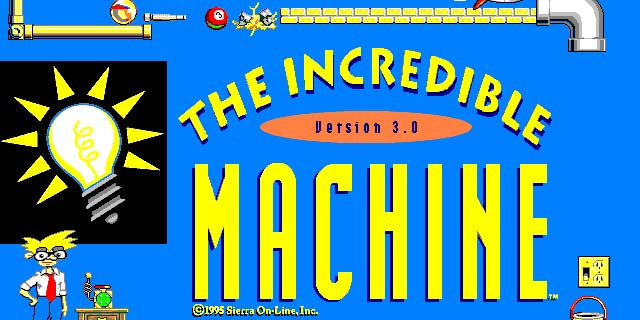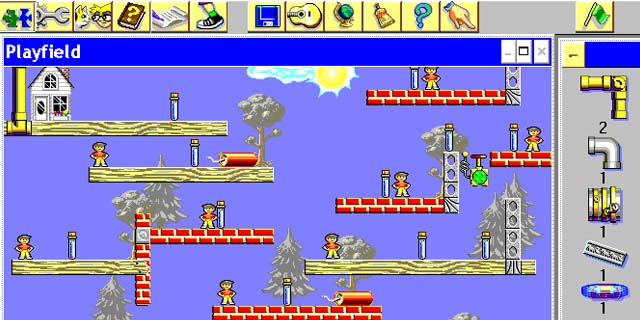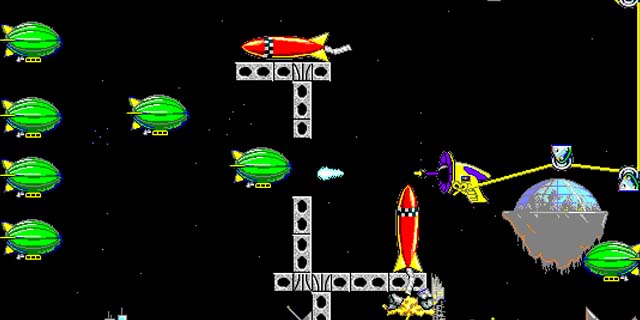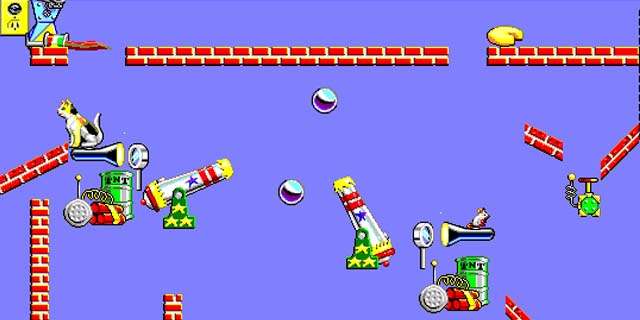
Few games sparked my imagination when I was a kid as much as The Incredible Machine did. There was something unique, something inherently appealing about that game that I didn’t quite find in any other titles of the genre and, until recently, I couldn’t even say what it was.
Because it wasn’t just the concept of building a Rube Goldberg machine. There was more than that, something that arose from a foundation of great level design, something that made you feel like you were solving a problem more than a riddle. For some reason it was different.
And when I ran the game again, tweaking my computer’s settings to run a three-megabyte game, I started to discover why. Most puzzle games revolve around one or two simple concepts, a small premise, so as to speak, with the problems being a direct result of those concepts. Building bridges and defying gravity are inherent problems to the protagonist critters of World of Goo, and making straight lines is the inherent problem of each Tetris’ piece. Those games are built around something small and closed-ended, and, while creative, they are ultimately limited in scope.

But The Incredible Machine doesn’t work that way. With so many gadgets and everyday items you can use to achieve your goal, the game doesn’t ask you to apply existing mechanics but to discover new ones, new interactions and new ways to trigger explosives with a slice of cheese.
And the puzzles themselves are incredibly fun! Making a cat and a mouse shoot each other with cannonballs, helping your neighbor get home when the screen is filled with nitroglycerine and TNT and using a rocket to lit fireworks are examples of puzzles in a game that was made with love and care by their creators. You can even spot small cosmetic touches here and there, like a mouse eating under the stairs just because it’s fun to have him around. Compared to the dry thinking of clones and sequels, the world of TIM 2 and 3 is vibrant and really comes out as alive, even when there are only machines in the screen.
This love for the concept and this polish permeates all aspects of the game, from the idle animations of the pieces to the nicknames given to the mouse and cat. Even the hints and the item descriptions have a certain charm to them that is rare nowadays, a certain childish one we can all relate to.

And you can’t talk about TIM’s charm without talking about the music! With a new genre for each song, the soundtrack covers country, rock, salsa and even a little bit of Hip Hop with fitting machine-building lyrics. There’s also techno, ragtime and the unforgettable “Tuna Loaf”, which manages to be both satirical and heartwarming. It’s just fun, and like all those small details, it enhances the experience and turns it into something unique, making each “Eureka!” much more than a clever thought.
Unfortunately, while The Incredible Machine 2 and 3 were a huge success and an improvement over the rough original, Sierra never made a real successor. After The Incredible Machine 3.0, the Windows port and the version of choice for the modern gamer, all the titles in the series were made after Sierra turned into a walking corpse. Beyond ugly rendered graphics, there’s no reason to play them, as they have the same puzzles.

But there’s hope. Despite being made twenty years ago, the series left a lasting impression on the industry’s unconscious and many have tried to make a worthy successor or cheap cash-ins through the years. Stepping into the plate today is Rovio’s Amazing Alex, which frames the devices as being the doings of a cheerful kid, making me cautiously intrigued. Rovio might not be the champion of level design, but unlike others, it seems they might actually do something interesting.
And if not, they can always fix it with some lasers and cheese.



















